SmileyCTF 2025
Challenges
Easy Come Easy Go
Info
Soln
The entry for go programs is main.main. In binary ninja, we get this for main:
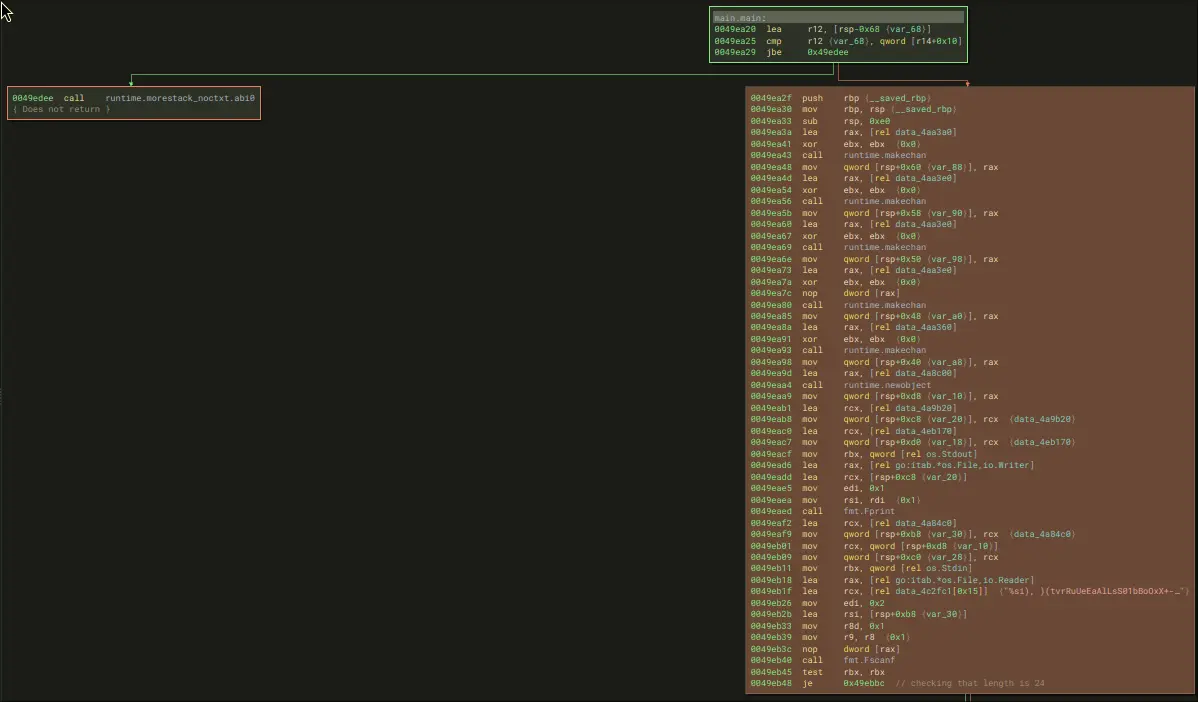 This first block, will check if there is enough RAM to load the program. If so, then we go to the right-block.
The right block will initialize Go Channels, five of them, aswell as print a
This first block, will check if there is enough RAM to load the program. If so, then we go to the right-block.
The right block will initialize Go Channels, five of them, aswell as print a > and ask for user input with scanf.
 Then, a simple flag length check is done before progressing forwards
Then, a simple flag length check is done before progressing forwards
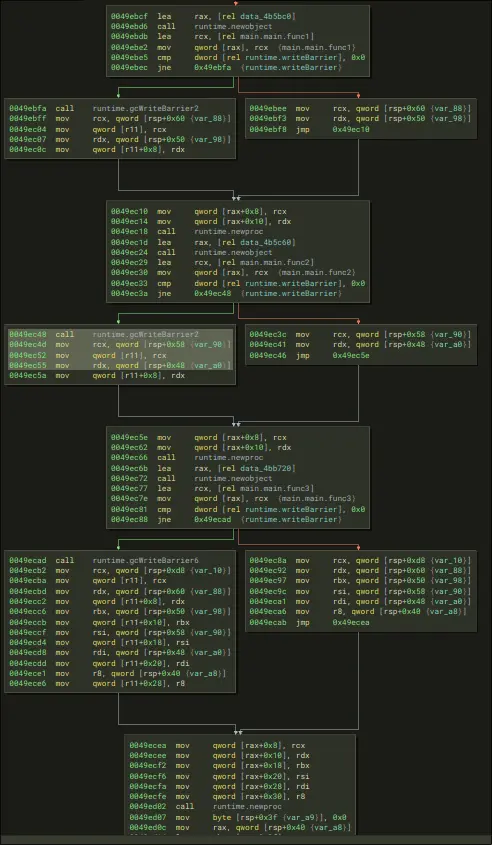 Then, a series of Goroutines are called. A goroutine will have this structure of checking write barriers before every call.
Then, a series of Goroutines are called. A goroutine will have this structure of checking write barriers before every call.
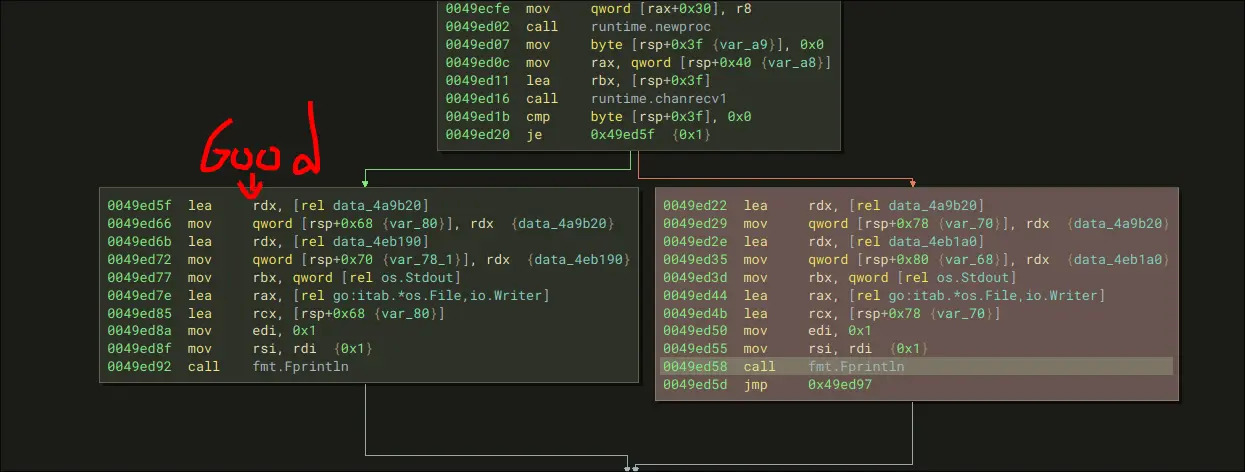 At the very end, rbx recieves data from a channel, which is then compared to be equal to 0. If they are equal, then we get the winner flag.
So, in essence, the very last goroutine we call which is
At the very end, rbx recieves data from a channel, which is then compared to be equal to 0. If they are equal, then we get the winner flag.
So, in essence, the very last goroutine we call which is main.main.func3 will determine if we win or not.
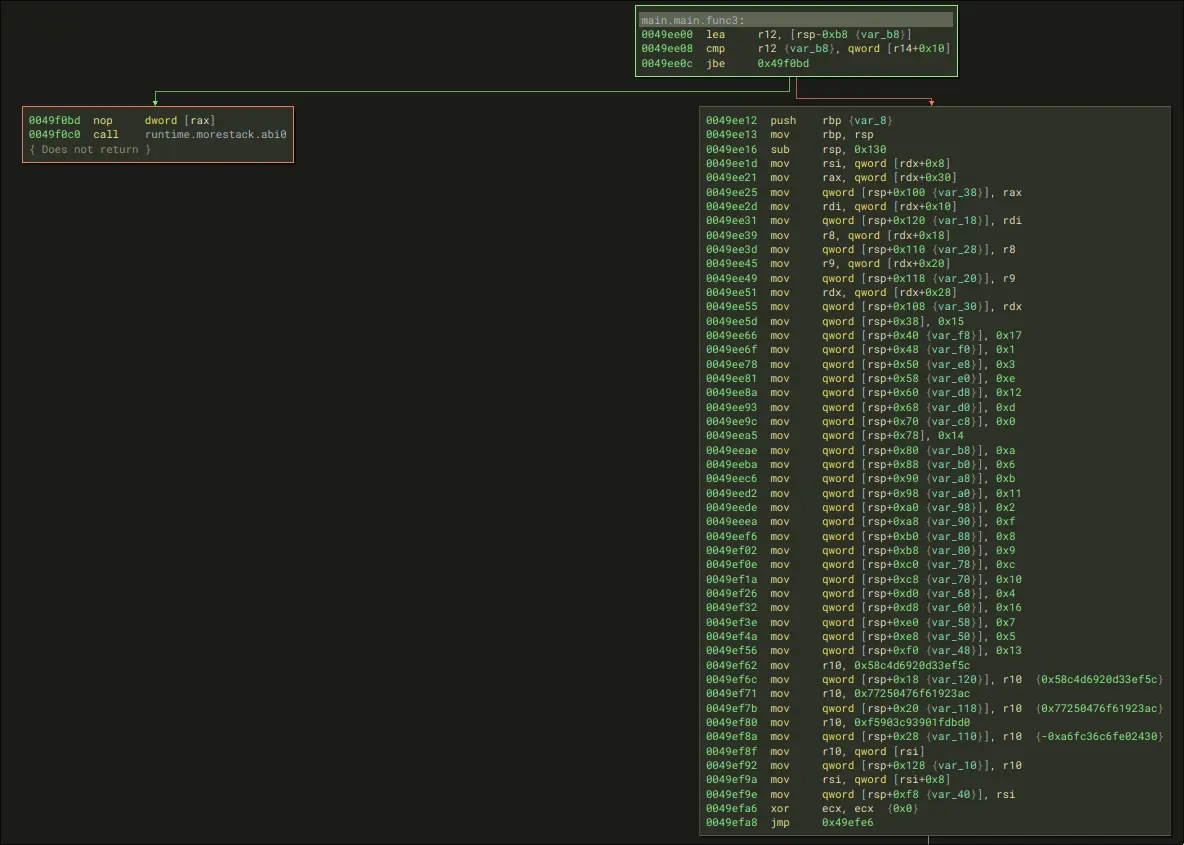 Again, there is the check for sufficient RAM for the stack, we can just ignore that.
Notice that there is a series of assignments to the stack. 24 in fact, perfect with the length of our flag. Lets call this list
Again, there is the check for sufficient RAM for the stack, we can just ignore that.
Notice that there is a series of assignments to the stack. 24 in fact, perfect with the length of our flag. Lets call this list f3list
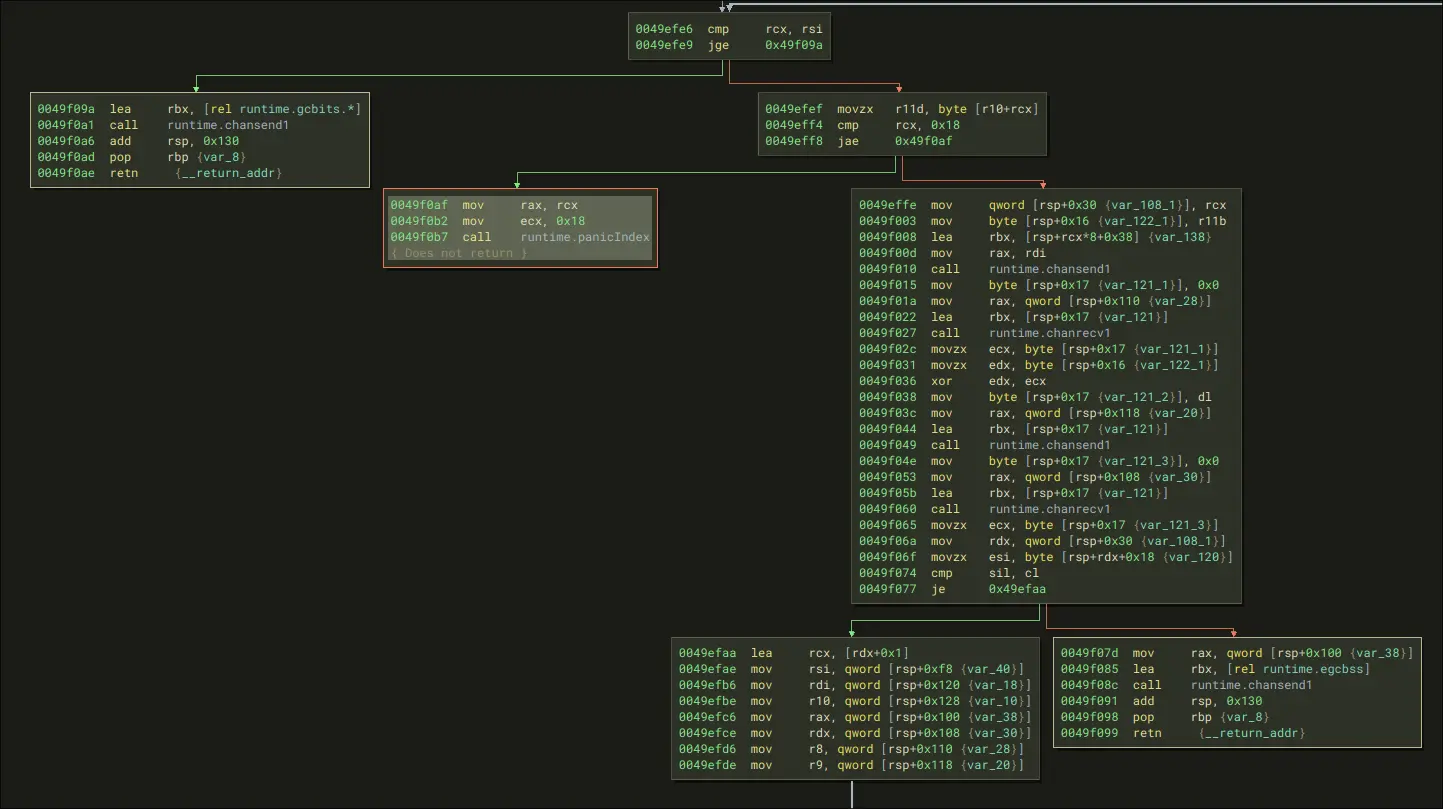 The following loop will check iterate through all characters from 1-24 and do the following:
The following loop will check iterate through all characters from 1-24 and do the following:
- Get the current number from
f3list[counter] - Send this to a channel that func1 listens to, and recieve the output
- XOR that output with
ourinput[counter], and send this to a channel that func2 listens to, and recieve that output - Check that output with a hardcoded output If this loop passes 24 times, then we win.
I used Delve to actually see which function was listening to which channel, since GDB had issues with concurrency.
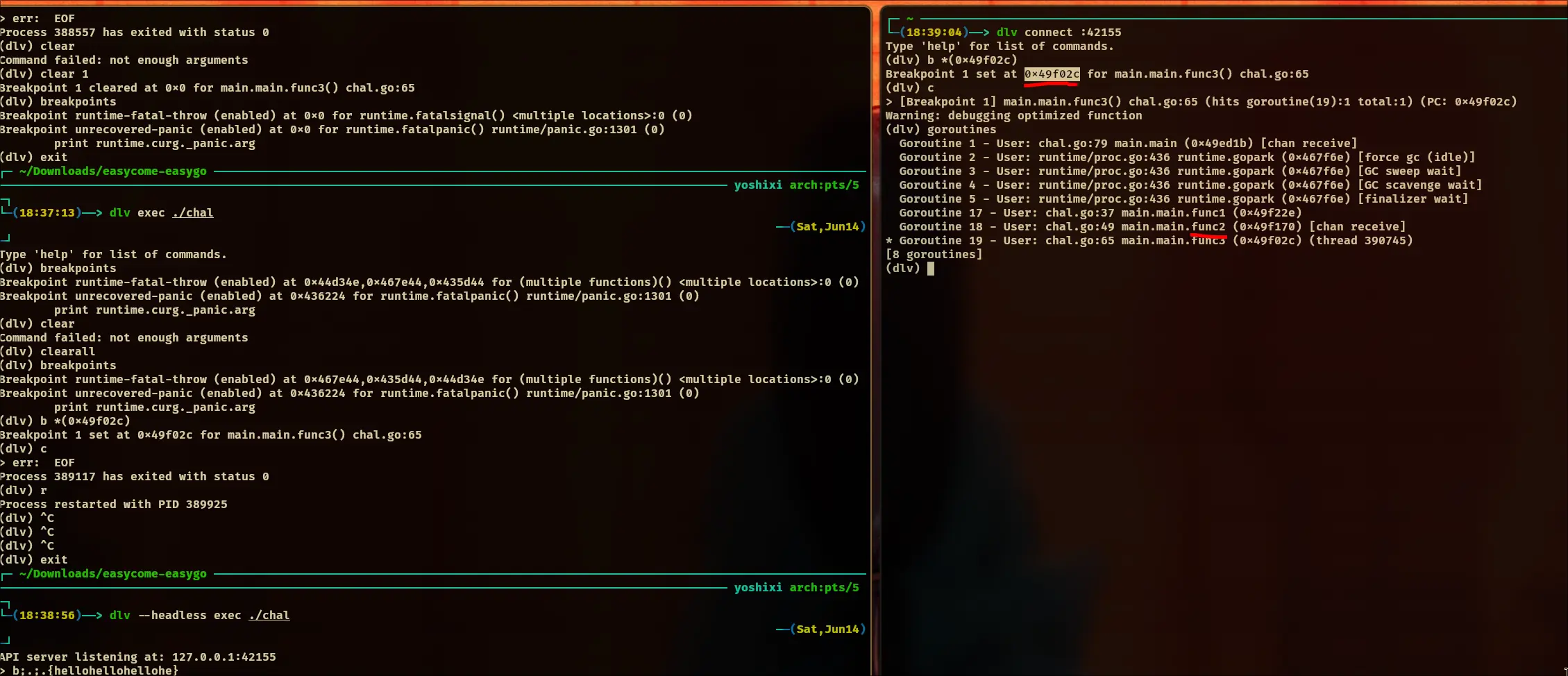
Final Script
firstecx = [0xcc, 0x02, 0x84,0xf2,0x1a, 0x42, 0xb1, 0x3e, 0x82, 0x5d, 0x30, 0x44, 0x12, 0x51, 0x6c, 0x6f, 0x2d, 0x4c, 0x51, 0xc1, 0x57, 0x47, 0xf,0xac]
lastecx = [0x5c, 0xef, 0x33, 0xd, 0x92, 0xd6, 0xc4, 0x58, 0xac, 0x23, 0x19, 0xf6, 0x76, 0x4, 0x25, 0x77, 0xd0, 0xdb, 0x1f, 0x90, 0x93, 0x3c, 0x90,0xf5]
func2 = [0xbe, 0xd6, 0x9b, 0xc4, 0xa6, 0xef, 0x12, 0x09, 0x46, 0x4d,0x44,0x83,0x05,0x3b,0x16,0x6a,0x95,0xa3,0x3e,0x64,0xf4,0x1f,0xe6,0x24]
listlen = len(firstecx)
for i in range(listlen):
print(chr(firstecx[i] ^ func2[i] ^ lastecx[i]),end="")
for i in range(24-listlen):
print("a",end="")
print("")













